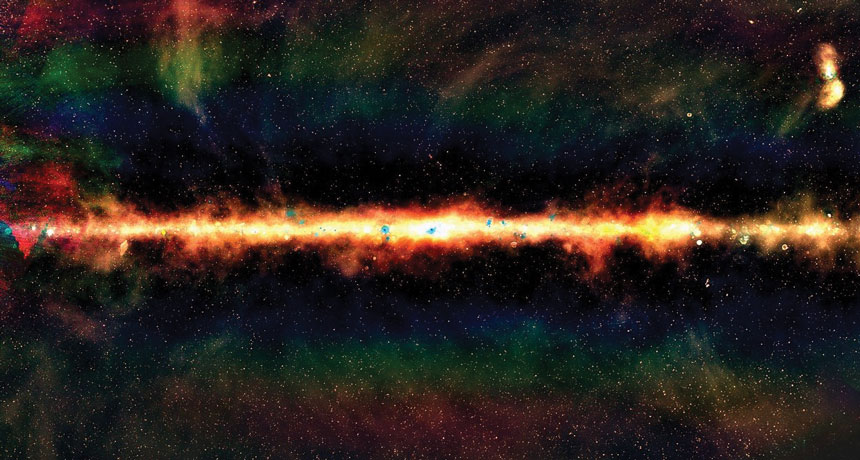Interactive map reveals hidden details of the Milky Way

There’s much more to the universe than meets the eye, and a new web-based app lets you explore just how much our eyes are missing. Gleamoscope presents the night sky across a range of electromagnetic frequencies. Spots of gamma rays pinpoint distant feeding black holes. Tendrils of dust glow with infrared light throughout the Milky Way. A supernova remnant — the site of a star that exploded roughly 11,000 years ago — blasts out X-rays and radio waves.
Many of these phenomena are nearly imperceptible in visible light. So astronomers use equipment, such as specialized cameras and antennas, that can detect other frequencies of electromagnetic radiation. Computers turn the data into images, often assigning colors to certain frequencies to highlight specific details or physical processes.
In Gleamoscope, a slider smoothly transitions the scene from one frequency of light to another, turning the familiar star-filled night sky into a variety of psychedelic landscapes. Pan and magnification controls allow you to scan all around the night sky and zoom in for a closer look. The interactive map combines images from many observatories and includes new data from the Murchison Widefield Array, a network of radio antennas in Australia. Over 300,000 galaxies appear as dots in images of the new radio data, described in an upcoming issue of Monthly Notices of the Royal Astronomical Society. The radio map by itself can also be explored on mobile devices in a separate app called GLEAM, available on Google Play.